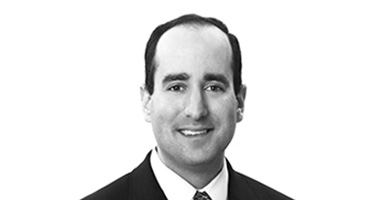The IRS form for tax-exempt organizations, Form 990, reveals a lot about your college or university to your prospective and current students, alumni, faculty, staff, the public, and the media.

“Because these institutions are consistently under public scrutiny, the public’s impression of the disclosures is as important as filing complete and accurate returns with the IRS.”
The purpose of the form has always been to enable the IRS and the public to evaluate whether tax-exempt colleges and universities are complying with the requirements to maintain their exempt status. All tax-exempt higher education institutions are required to file Form 990 to provide an overview of their activities, including, but not limited to, their program information, financial activities, compensation to key executives, and qualifications as a tax-exempt school. “Because these institutions are consistently under public scrutiny, the public’s impression of the disclosures is as important as filing complete and accurate returns with the IRS,” said Grant Thornton Not-for-Profit and Higher Education Tax Managing Director Erin Couture.
The Form 990 contains a dense amount of detailed information covering many topics, so reviewing it can be time-consuming and overwhelming. While reviewing each line item might not be practical, it is important to carefully review some of the most sensitive sections of the form, especially since the information can be easily accessed by the public and the media.
There are three major hotspots in the form that warrant this special focus and scrutiny: Schedule J (executive compensation); Schedule L (conflicts of interest); and the presentation of financial information (core form). Let’s explore these three sections in greater detail.
1. Schedule J: Compensation and other troublesome topics
Schedule J is used to disclose compensation paid to IRS-specified individuals, such as “certain officers, directors, individual trustees, key employees, and the highest compensated employees,” including compensation paid by related organizations. Reporting requirements also include disclosure of the process that the institution follows in determining executive compensation and related benefits.
“The individuals included in these compensation reports can include a long list of people,” said Couture. “It can include the president, key executives, coaches and, in some cases, physicians.” The media has actively reviewed these Schedules J to highlight highly compensated individuals such as a football coach or investment professional — often the highest-paid employee at an institution. These high salaries can lead to questions about the institution’s spending priorities and purpose.
Key areas of Schedule J that warrant special scrutiny are:

“Bonuses are highly visible on the Form 990, so boards should be mindful that alumni and the press will be looking at those figures with great interest.”
- Certain non-cash benefits: The Form 990 includes certain required disclosures around items such as housing, first-class travel, and personal services. As many institutions require the President to live on campus, this is a typical disclosure, but take care with the valuation of the housing and its disclosure on the form.
- Severances: For individuals that trigger a form disclosure, institutions must disclose severance payments made upon a person’s involuntary or voluntary separation from service. Sometimes, this involves substantial payments (for example, more than two years of compensation continuation) that are outlined as part of their original employment contract or as part of a negotiated departure from the institution. In these cases, additional disclosures, including the individual’s name, terms and conditions of the arrangement, and payment amounts, are required. “This can get tricky because of the potential for legal repercussions, the sensitivity of the information, and confidentiality issues,” Couture said. “It is always our advice to pay special attention to severance agreements and severance clauses in employment contacts as they are drafted, as well as when they are reported on the 990.”
- Deferred compensation: Scenarios in which compensation payments are made long after an individual has left the institution can create headaches. Because deferred compensation must be reported both in the year earned and the year paid, the way in which such accruals present on the Form 990 can often create the perception that an individual’s compensation is greater than it actually was. Sometimes the cash payments are reported on the Form 990 after the individual has stopped working for the institution, which creates questions for the reader. “The timing can be very important and can present an optics issue,” Couture said. “So, it’s important to be aware of those deferred compensation plans in place for key executives, and how they appear when they are accrued for and ultimately paid out.”
- Bonuses: Institutions are required to report bonus and incentive compensation paid. “We know that institutions face stiff competition to attract and retain top talent, and sometimes creative and lucrative bonus arrangements are the way colleges and universities attract sought-after administrators, endowment professionals, and athletic coaches. Those bonuses are highly visible on the Form 990, so boards should be mindful that alumni and the press will be looking at those figures with great interest,” said Grant Thornton Not-for-Profit and Higher Education Tax Principal Mary Torretta.
Higher education institutions often tend to be large “employers,” including W-2 employees and independent contractors, and the count on the Form 990 can be compared to IRS internal records with discrepancies noted. Double-check the counts you present on Part V and inquire whether your institution had any complications during the period (such as filing amended payroll tax returns).
2. Schedule L: Conflicts of interest
Schedule L requires the disclosure of a college or university’s business dealings with what the IRS refers to as “disqualified or other interested persons.” This is another section of the form that undergoes detailed scrutiny by the IRS and other readers, so it is important to be clear and intentional about:
- Who is subject to disclosure: Conflict disclosures may include officers, trustees and key employees. The term “interested person” has a different meaning in each section of Schedule L. It is important to ensure that you have all the relevant information for each factual scenario and that there are no omissions or duplications.
- Compensation of relatives: The compensation of a relative of an officer, trustee or key employee is a common disclosure on Schedule L. For example, disclose when the partner of the President is an academic professional or employed by the university in an advancement role. It is important that the review of the President’s compensation includes consideration of family employment, and the institution should consider the public perception of such employment.
- What should be disclosed: “There’s a difference between what constitutes a conflict for the institution and a conflict for the Form 990,” said Torretta. “Conflicts that are reported on the Form 990 are not transactions that aren’t allowed. Often, they provide benefit to the institution because of the relationship between the parties. It is important, however, that each transaction is disclosed, as a failure to do so is often the basis for critical feedback from the media and other constituencies.”
3. Financial information
One of the key disclosure areas on Form 990 is the provision of financial information. In general, this financial information agrees to the audited financial statements, but it can be used in many ways by the public. For example, the disclosure of an institution’s financial aid spending can be reviewed and contrasted with investment returns and available endowment assets. Also, the balance sheet and its supporting schedule are often mined for endowment value information and investment holdings, such as those in the oil and gas sectors.
Related resources
SERIES
ARTICLE
ARTICLE
Further focus
Other important sections of Form 990 might require special attention, too. These can include sticky donor issues. For example, how do you maintain the anonymity of donors who want to keep their donations private and meet IRS requirements for full disclosure? Many institutions have tax-exempt bonds, and Schedule K is rife with faults. Work closely with your bond counsel to make sure that you have not accidentally drawn attention to something that would create additional scrutiny, including your reporting of private business use.
With the many transactions it covers, Form 990 can raise issues for your institution with your students, alumni, faculty, staff, the public, and the media. Prepare and review your Form 990 to avoid any surprises when it is time to file—and have a plan in place to quickly and effectively address any issues that arise.
Contacts:



Head of Not-for-Profit & Higher Education Industry
Partner, Audit Services, Grant Thornton LLP
Grant Thornton Advisors LLC
Dennis Morrone is the National Managing Partner of Grant Thornton's Not-for-Profit & Higher Education Practices.
Iselin, New Jersey
Industries
- Not-for-profit & Higher Education
Service Experience
- Advisory Services
- Operations and Performance
- Audit & Assurance Services
- Finance Transformation
- Employee Benefit Plan Audit
- Transaction Advisory



Partner, Tax Services
Grant Thornton Advisors LLC
Mary is a Tax Partner in Grant Thornton's Not-For-Profit and Healthcare Practice and is solely dedicated to tax-exempt clients. As a tax attorney, Mary is responsible for research in the legal and business consequences of tax planning strategies, tax controversy, applications for exemption, and private letter ruling requests for not-for-profit organizations.
Arlington, Virginia
Industries
- Healthcare
- Not-for-profit & Higher Education
Service Experience
- Tax Services
- Human Capital Services



Managing Director, Tax Services
Grant Thornton Advisors LLC
Erin Couture is a Managing Director in Grant Thornton’s Not-For-Profit, Healthcare and Higher Education Practice and is dedicated to meeting the needs of tax-exempt clients.
Boston, Massachusetts
Industries
- Healthcare
- Not-for-profit & Higher Education
Service Experience
- Tax Services
- Human Capital Services
Trending topics

No Results Found. Please search again using different keywords and/or filters.
Share with your network
Share